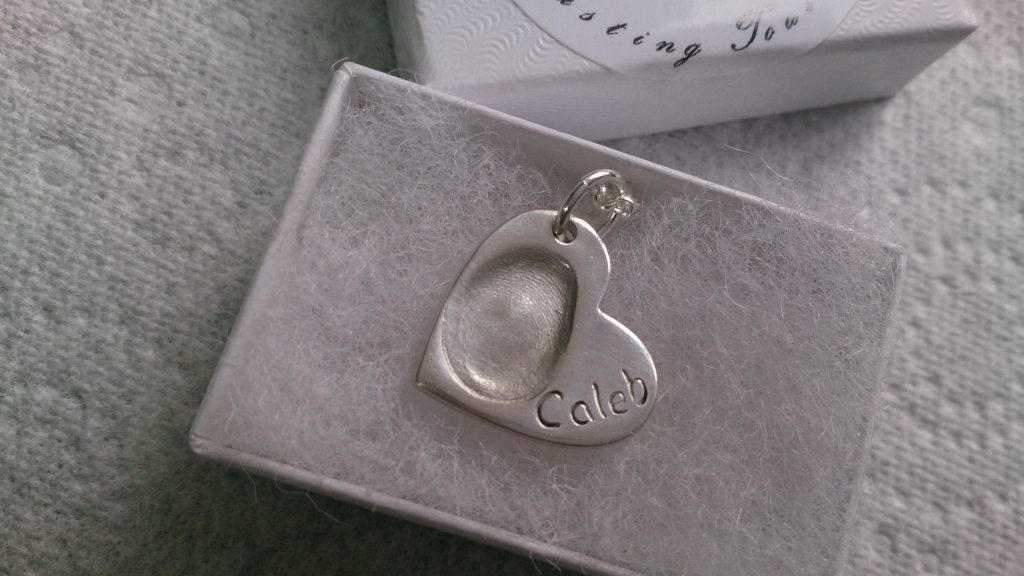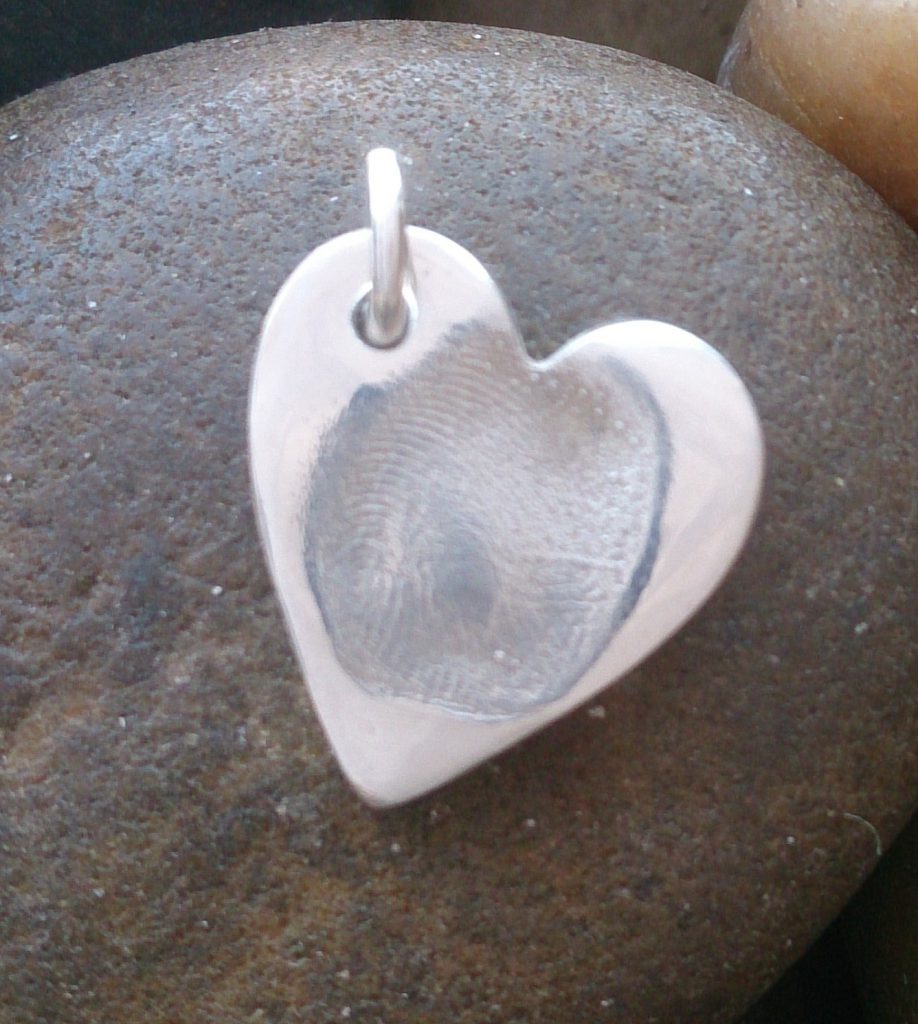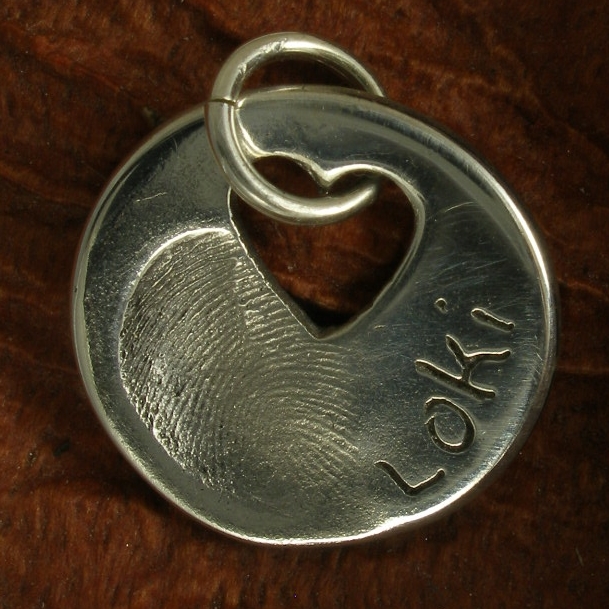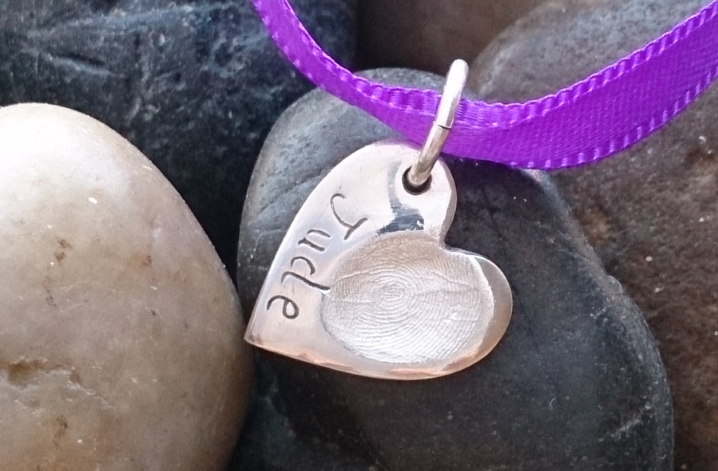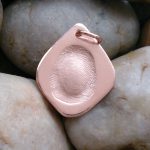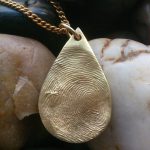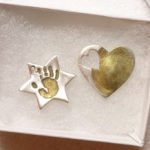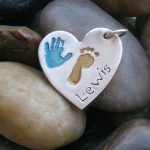There are several ways that fingerprints can be collected and turned into jewellery. Each method will produce a different style of prints that will in turn produce a different style of jewellery.
The most common methods of collecting the prints are
- Two part moulding compound (the putty method)
- Good ole fashioned ink and paper
- Pre inked strips
- Inkless wipes or pad and developing paper
- Pencil and sticky tape
- Digital Scanner
Each method of collecting fingerprints has its own pros and cons. In this post I will talk through them and hopefully you will be able to decide which style of prints are best for you.
Two part moulding compound
This is probably the most common way of collecting prints for fingerprint jewellery. A fingerprint moulding kit can be sent to you at home or to your funeral director if you need to collect prints from someone who has passed away.
Pros: This method can capture amazing detail from the prints, and unlike any of the other methods it can also capture the shape of the fingertip including any little dents. For silver jewellery this type of prints looks and feels just like the person has pressed their finger directly into the silver. If good quality putty is used, the prints will last for years and years. It’s very easy to do. If used for jewellery by Lasting Touch, the moulds are always returned to the customer (and the cast which can be used to make more jewellery is kept of file).
Cons: There are different quality putties on the market and some will not capture fine detail as well as others. At lasting touch I use a Japanese brand that captures amazing detail, it’s a little bit more expensive but it’s well worth it. Not all fingerprint jewellery companies will return the moulds to the customer, so you may be tied to a particular company once you have had jewellery made.
It can be difficult to collect prints from very young children, particularly those under 1year old who may not have strong enough fingerprints. It is also quite time consuming as the putty needs to be split into balls mixed (mixing takes only a minute) and then allowed to set for around 15-20 minutes. This can put some funeral directors off using it. Moulded prints are restricted to use in making handmade keepsake jewellery as they do not work with machine engraved pieces. Ink prints work best with adult prints, they are not so effective with children who have much fainter whorls.
Ink pad and paper
Good old fashioned ink and paper is probably the most favoured method amongst those who prefer flat prints to moulded prints. It uses materials that are tried and tested.
Pros: It uses materials that most people have laying around or can easily access. No special kits necessary. Someone with experience can take very nice clear prints. Ink fingerprints can be used to make both handmade and machine engraved jewellery each with different results. It can be scanned and emailed, so you do not need to part with the originals, however if you prefer to send paper copies to Lasting Touch I will always return them to you.
Cons: It can be messy, ink can obviously stain clothing and nearby materials. If taking prints from someone else it can be difficult not to smudge them. You do need to have some experience of how much ink and pressure to use to collect the best fingerprints. Paper prints can fade and deteriorate over time (however you can scan or photograph them in order to preserve them digitally). They are fragile and could easily be destroyed by fire or water.
Ink strip and paper
Similar to the ink pad method, but using a pre inked strip rather than an ink pad.
Pros: Ink strips are much less messy than ink pads because the ink is much drier. It is easier to get just the right amount of ink onto the finger without over inking and ending up with a blobby mess! Ink strips are easy to post and I have put together an ink strip kit that can be sent out to customers who don’t have the necessary materials to take ink prints at home (or just want a less messy alternative). The prints taken with ink strips tend to be much clearer than those taken with other ink/pencil and paper methods. Unlike ink pads, ink strips last a long time and do not dry out.
Cons: There really aren’t many cons to these. They are a little more expensive than ink pads, but that’s about all I can think of.
Inkless wipe/pad and developing paper
These are more commonly used to collect full and hand footprints, however they can also be used to take fingerprints.
pros: They are mess free and can produce very detailed adult fingerprints.
cons: They are not so good for the very fine detail in children and baby fingerprints (though excellent for full handprints). They are a more expensive method of collecting fingerprints than ink or pencil methods.
Pencil and sticky tape
This is a lesser known method, but it has become more popular with instructions found on the internet. Basically, a soft pencil is used to scribble onto some paper, the finger is wiped on the pencil scribble to ‘dirty’ it and then the excess is taken off using sticky tape which captures the print.
Pros: This can be less messy than ink and can produce incredibly detailed fingerprints which can usually be used for handmade and machine engraved jewellery. As with in, pencil and sticky tape are materials that most people have easy access to. The sticky tape helps in preserving the prints for a long time. As with ink prints you have the option to send digital or paper copies to me.
Cons: The prints are usually much lighter than ink prints which can make them unsuitable for certain processes without some enhancing. The prints will appear in reverse on the tape, so would need to be mirrored in order to get a true representation of the fingerprint. Like ink prints though, pencil prints could easily be destroyed so it is advisable to scan or photograph them and keep a digital copy.
Digital scanner
This is the latest technology in fingerprint collection.
Lots of funeral directors have access to scanners now, these may be supplied by a specialist keepsake manufacturer who the funeral director works with, however usually if you ask the prints can be sent to you by email for you to use elsewhere if you want to.
Pros: The process is fast and simple. If your funeral director has has access to a scanner and computer no additional materials are needed. It is completely mess free. The prints are very detailed and are stored digitally so they will never deteriorate. They can be sent quickly by email and used to produce either handmade of laser engraved jewellery as well as other keepsakes.
Cons: Scanner technology costs alot more to set up than any other method which can put some funeral directors off getting one. Often funeral directors who use scanners will be linked to a particular jeweler and will want to sell you jewellery that they can make a commission on.

